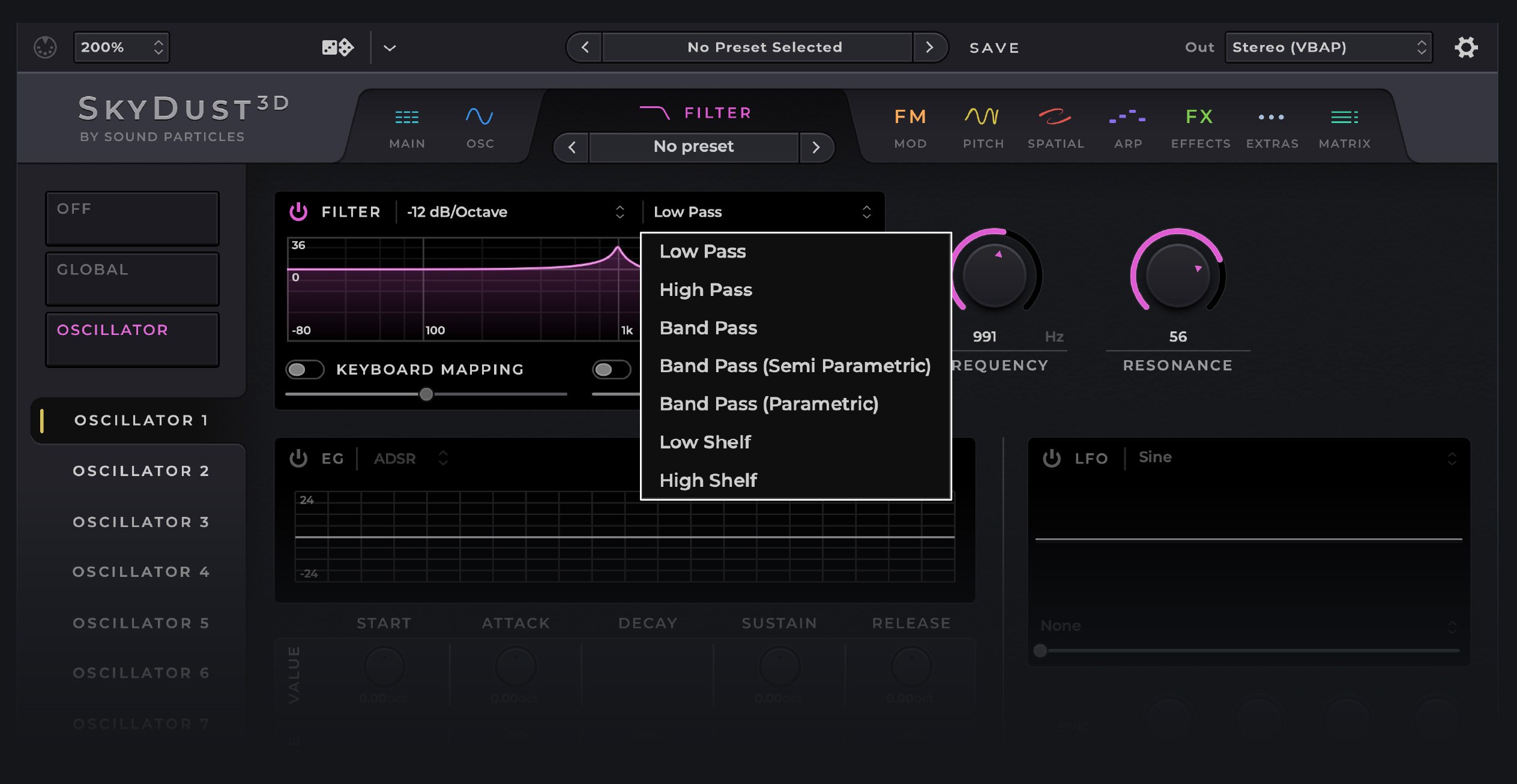Tutorial: Programming a Synth - Filters Explained - Part 1 [3/12]
Welcome to the Synth Tutorial series! If you're new to the world of synthesizers or just getting started with our SkyDust 3D, you're in the right place. In this series, we'll walk you through the fundamentals of sound synthesis using our SkyDust 3D. This is the first of the two articles dedicated to getting Filters explained. Don't forget to stop by the article about EGs.
During our last session, we explored the concept of envelope generators and how they influence sound characteristics. Today, our focus will shift to another crucial element found in synthesizers: filters.
Subtractive Synthesis: A Brief Overview
Before we delve into the specifics of filters, let's briefly touch upon subtractive synthesis. Synthesis can take various forms, such as subtractive, additive, FM (Frequency Modulation), and many more. However, subtractive synthesis is the most popular and widely used method. The concept behind subtractive synthesis is to start with a sound that contains multiple harmonics, often achieved using waveform types like Square and Sawtooth. Then, by applying filters, we selectively remove or subtract unwanted harmonics to shape the desired sound.
An Analogy: Subtractive Synthesis and the Human Voice
To better understand subtractive synthesis, let's draw an analogy with the human voice. When we speak or sing, we essentially engage in a form of mechanical and biological subtractive synthesis. Our vocal folds vibrate, producing sound, and depending on the position of various elements in the vocal tract (e.g., tongue, mouth), different filters shape the sound. Think about how your voice changes when you pronounce vowels like A, E, I, O, and U. Similarly, synthesizers employ filters to shape the waveform and create unique timbres.
Exploring Filters in Synthesis
In synthesis, filters are the tools that allow you to manipulate the harmonic content of a sound. They act as frequency-dependent attenuators, selectively reducing or boosting specific frequencies. The most common filter type is the Low Pass filter, which allows low frequencies to pass through while attenuating higher frequencies. By adjusting the cutoff frequency of the filter, you determine where the attenuation begins.

The Role of Slope and Resonance
Two essential parameters of filters are slope and resonance. The slope determines the rate at which the filter attenuates frequencies above the cutoff point. A steeper slope (higher order) results in a faster reduction of harmonics, while a gentler slope (lower order) allows for a more gradual attenuation. Resonance, on the other hand, introduces a boost in the vicinity of the cutoff frequency before the attenuation takes place. It adds emphasis and character to the sound, creating a unique tonal quality.
Mastering Filters
When programming a synth, you'll have the opportunity to explore different filter types, slopes, and resonance settings. By manipulating these parameters, you can achieve a wide range of sonic possibilities. For instance, changing the cutoff frequency and slope can drastically alter the character of a sound, from mellow and warm to bright and sharp. Additionally, tweaking the resonance parameter provides an extra level of control, allowing you to emphasize specific frequencies and add intriguing textures to your sound.

Filters are an integral part of subtractive synthesis, enabling you to shape the harmonic content of your sounds. By selectively removing unwanted harmonics, you can craft unique timbres and achieve the desired sonic characteristics. Understanding the parameters of filters, such as cutoff frequency, slope, and resonance, empowers you to create a vast palette of sounds in your synthesizer programming journey. So, go ahead and experiment with different filter settings to unlock your creativity and bring your sonic visions to life. Happy filtering!
Once you've mastered Filters, move forward to the next tutorial to learn how to combine filters and EGs.
See you on the next tutorial!
Stay tuned and join the revolution!
Topics: Sound Particles, Sound Design, Tutorials, 3D audio, Surround Sound, Music, synth, virtual instrument, synthesizer, SkyDust3D

